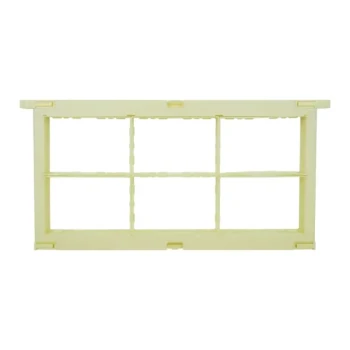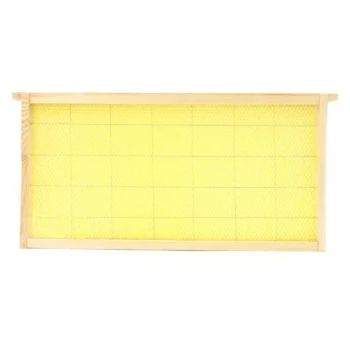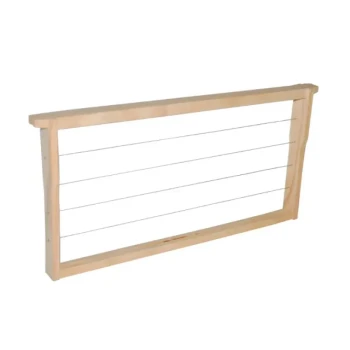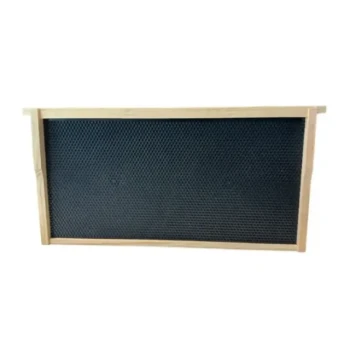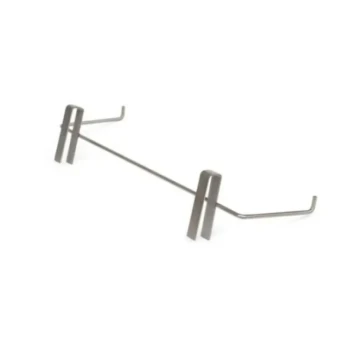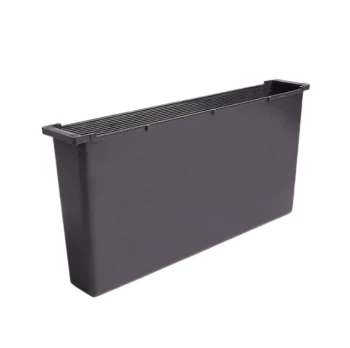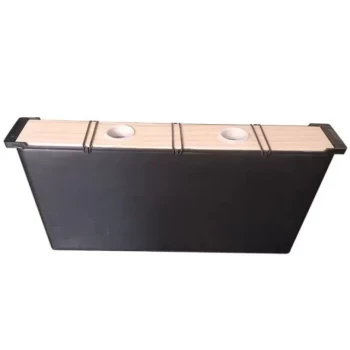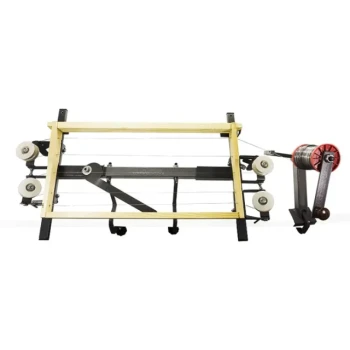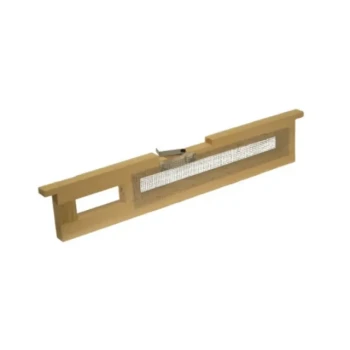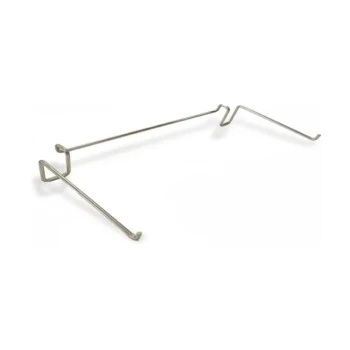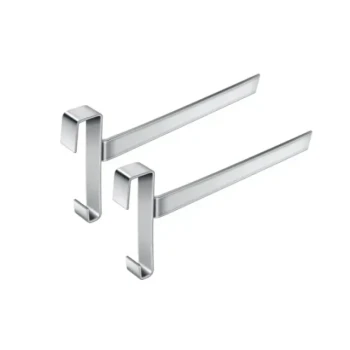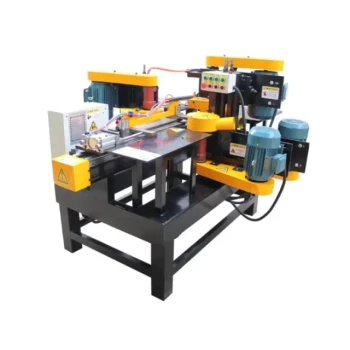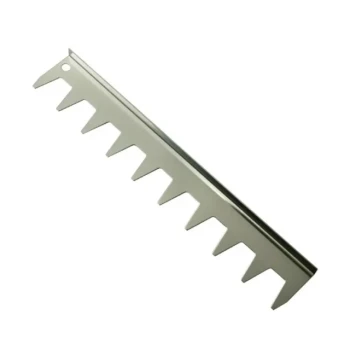For producing pure, edible honeycomb, the best choice is typically a wooden frame combined with either a foundationless setup or a very thin sheet of beeswax foundation. While one-piece plastic frames offer durability and hygiene for honey extraction, their rigid plastic core makes them fundamentally unsuitable for producing honeycomb that is meant to be eaten.
The critical decision for honeycomb production is not wood versus plastic, but the type of foundation used inside the frame. The goal is to encourage bees to build comb that is 100% pure, edible beeswax, which means avoiding the standard plastic or thick wax foundations used for honey extraction.
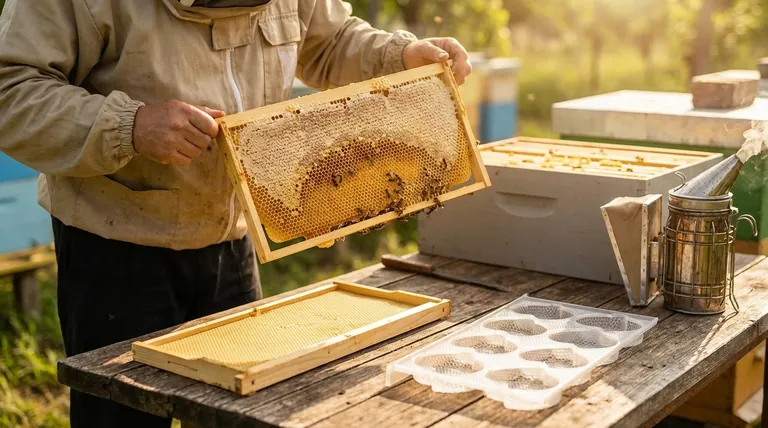
Why the Foundation is More Important Than the Frame
When producing honeycomb, your final product is the wax structure itself. This is a different goal than producing liquid honey, where the comb is simply a temporary container that gets reused.
The Goal: Pure, Edible Wax
For a pleasant eating experience, the comb should be delicate and free of inedible materials. Bees naturally build pure wax comb. The foundation is an artificial sheet we give them as a guide, and its composition directly impacts the final product.
Wooden Frames: The Versatile Standard
Wooden frames are the traditional and most flexible option. They can be used with any type of foundation—or none at all—giving you complete control over the final comb. This adaptability makes them the preferred choice for specialty products like honeycomb.
Plastic Frames: The Efficiency Choice
One-piece plastic frames, which have the foundation integrated into the frame, are excellent for large-scale honey extraction. They are durable, resist pests like wax moths, and can be cleaned easily, as your reference material notes. However, you cannot cut and eat the plastic foundation, making them the wrong tool for this specific job.
Choosing the Right System for Edible Comb
To produce pure honeycomb, you must give the bees a guide that they can either fully incorporate into the comb or build from with minimal interference.
Option 1: Foundationless Frames
This method encourages the most natural comb. A foundationless frame is simply an empty wooden frame, often with a thin wooden strip or a small line of melted wax along the top bar to serve as a starter guide.
- Pros: Produces the purest, most delicate honeycomb possible. It is 100% bee-made wax.
- Cons: Requires more careful management. Bees may build "cross comb" (connecting comb across multiple frames) if not given a proper guide and monitored correctly.
Option 2: Thin Surplus Wax Foundation
This is the most common and reliable method for producing high-quality honeycomb. It involves using a full sheet of extremely thin beeswax, known as "thin surplus" or "comb honey" foundation.
- Pros: Provides a clear guide for the bees, ensuring straight, perfect combs. The wax is so thin that the foundation's mid-rib is barely perceptible when eaten.
- Cons: The final product is not quite as pure as foundationless comb, but it is far easier to manage and produces a very consistent product.
Understanding the Trade-offs
Choosing a system is about balancing your goals for purity with your desire for efficiency and ease of management.
Wood: Natural vs. Maintenance
Wooden frames are the flexible, natural choice ideal for honeycomb. However, they require assembly and can potentially absorb moisture or harbor disease if old combs are not rotated out regularly. They are also susceptible to damage from wax moths.
Plastic: Durability vs. Unsuitability for Comb Honey
One-piece plastic frames are exceptionally durable, long-lasting, and hygienic for honey that will be extracted. Bees are sometimes more reluctant to draw comb on plastic, but its main drawback is simple: it is not for producing an edible product. It excels at a different task.
Foundationless: Purity vs. Labor
Going foundationless yields a premium, all-natural product. This purity comes at the cost of increased beekeeper vigilance. You must check the hive more frequently to ensure the bees are building straight comb, which can be a significant time commitment.
Making the Right Choice for Your Goal
Select your equipment based on the product you want to create and the time you are willing to invest.
- If your primary focus is the purest, most "natural" honeycomb: Use foundationless wooden frames and be prepared for more intensive hive management.
- If your primary focus is a reliable and scalable harvest of high-quality honeycomb: Use wooden frames with thin surplus beeswax foundation for a predictable and excellent result.
- If your primary focus is maximizing liquid honey production for extraction: Use one-piece plastic frames to benefit from their durability and efficiency.
By matching your frame and foundation to your specific goal, you empower your bees to create the exact product you want.
Summary Table:
| Frame/Foudation Type | Best For | Key Pros | Key Cons |
|---|---|---|---|
| Wooden Frame (Foundationless) | Purest, most natural honeycomb | 100% bee-made wax, delicate comb | Requires careful management to prevent cross-comb |
| Wooden Frame (Thin Surplus Wax) | Reliable, high-quality honeycomb | Straight combs, easy to manage | Slightly less pure than foundationless |
| One-Piece Plastic Frame | Liquid honey extraction (not for eating) | Durable, hygienic, pest-resistant | Unsuitable for edible honeycomb |
Ready to equip your apiary for premium honeycomb production?
At HONESTBEE, we supply commercial apiaries and beekeeping equipment distributors with the precise tools needed for success. Whether you need durable wooden frames for foundationless setups or reliable thin surplus wax foundations, our wholesale-focused operations ensure you get high-quality, scalable solutions.
Let us help you maximize your honeycomb harvest. Contact our team today to discuss your specific needs and explore our full range of beekeeping supplies.
Visual Guide
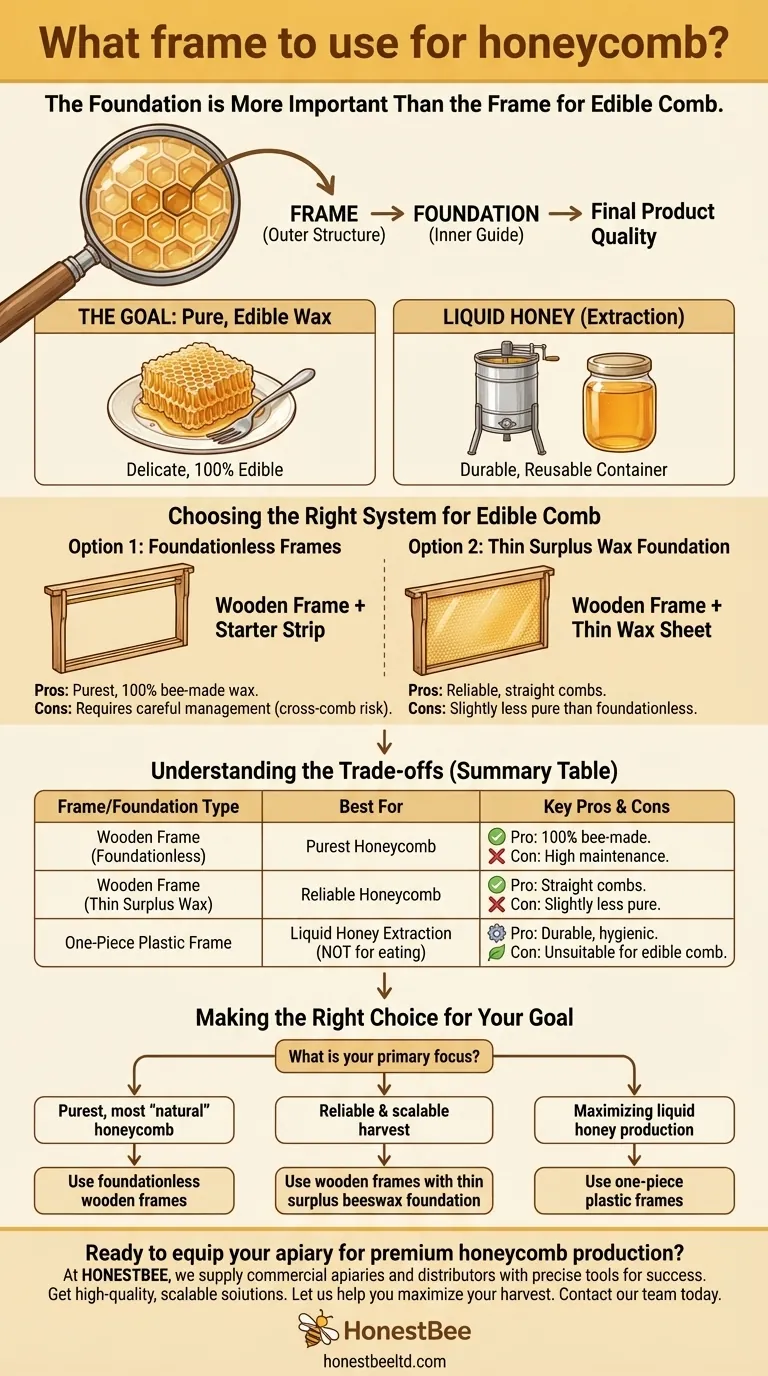
Related Products
- Heart-Shaped Comb Honey Frame and Honeycomb Cassette
- Plastic Bee Frame Beekeeping Hive Frames for Wholesale
- Plastic Honey Comb Frames Cassette Box for Honey
- Professional 500g Sectional Comb Honey Frame System for Beekeeping
- Assembled Wooden Bee Frames with Beeswax Foundation Ready to Use by HONESTBEE
People Also Ask
- How should you store prepared bee frames? Protect Your Investment from Pests and Decay
- How long does it take for bees to clean frames? 1-3 Days for Efficient Honey Frame Prep
- How many jars of honey from one frame? Unlock the Secrets to Maximizing Your Harvest
- What is a benefit of storing honey-laden frames? A Strategic Food Source for Spring Colony Survival
- How to wire a bee frame? A Step-by-Step Guide for Strong, Durable Honeycomb



